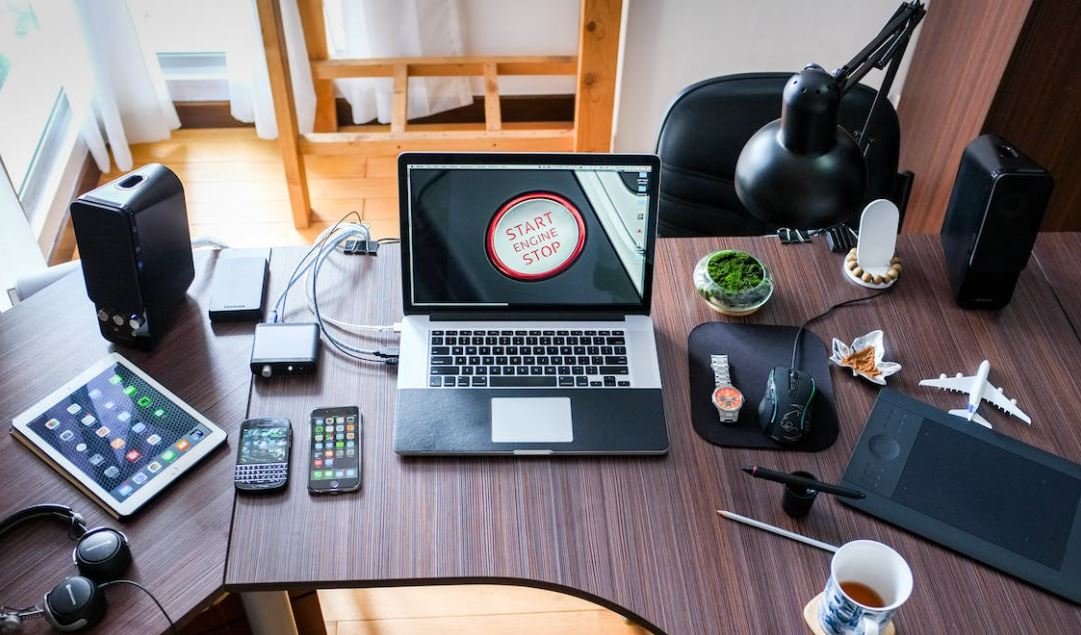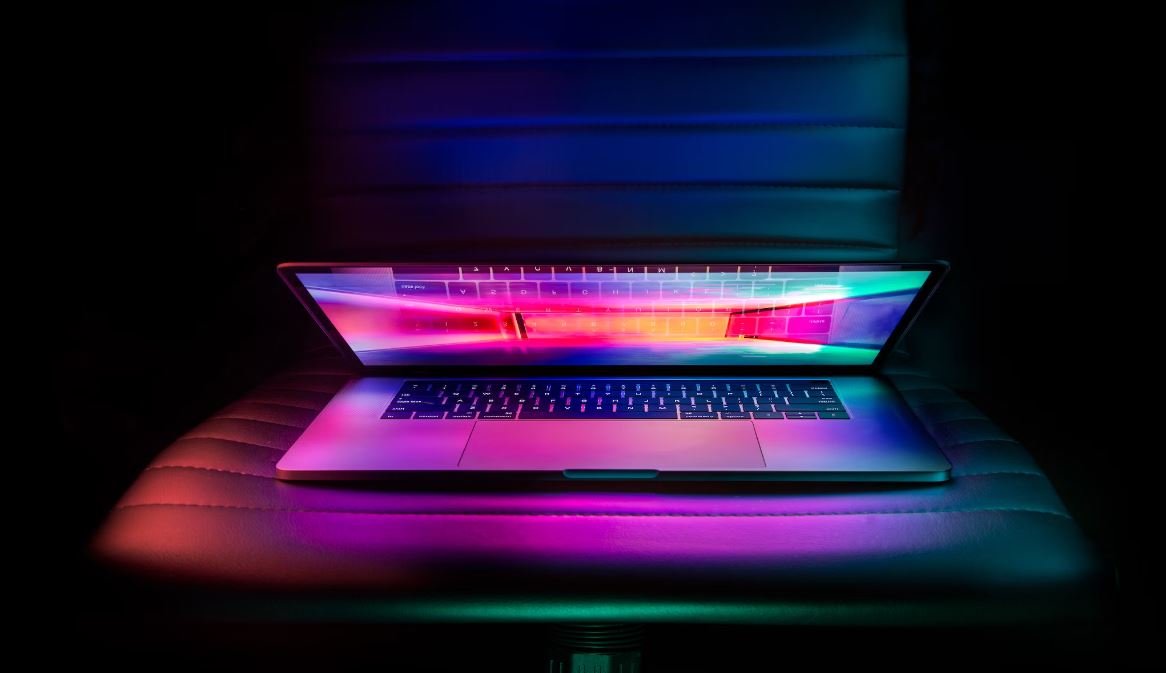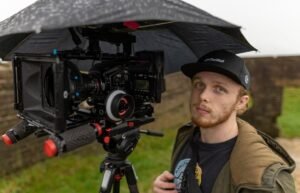Film Lightroom Presets
Film Lightroom presets are a popular tool among photographers and filmmakers for enhancing their images and videos to achieve a nostalgic, cinematic look. These presets are pre-configured settings that can be applied to photos or videos in Adobe Lightroom, a powerful editing software. With just a click, users can transform their raw footage into stunning visual pieces reminiscent of the film era. In this article, we will explore the benefits and possibilities of using film Lightroom presets in your creative projects.
Key Takeaways:
- Film Lightroom presets help photographers and filmmakers achieve a cinematic look in their images and videos.
- Presets are pre-configured settings that can be easily applied in Adobe Lightroom.
- Using film presets can save time and provide consistency in editing workflow.
Presets simplify the editing process by allowing users to apply a predefined set of adjustments to their media. With film Lightroom presets, you can effortlessly recreate the distinctive look of various film stocks, such as Kodak Portra, Fuji Velvia, or Ilford HP5. These presets are designed to emulate the characteristics of specific films, including colors, contrast, grain, and tonal range. By applying these presets, *you can instantly transform your digital images into works of art that evoke a sense of vintage charm.*
Film Lightroom presets offer a wide range of creative possibilities. Whether you want to achieve a warm and cozy feel for portraits, a vibrant and saturated look for landscapes, or a gritty and grainy atmosphere for street photography, there are presets available for every genre and style. These presets can be further customized to suit your personal preferences, allowing you to add your own touch to the final result. *By experimenting with different presets, you can discover unique looks and enhance your creative vision.*
How to Use Film Lightroom Presets
Using film Lightroom presets is a straightforward process that requires minimal effort. Here’s a step-by-step guide:
- Import your photo or video files into Adobe Lightroom.
- Select the desired media in the Library module.
- Navigate to the Develop module and locate the Presets panel on the left-hand side.
- Click the “+” icon next to the Presets panel to create a new preset group (optional).
- Right-click or control-click on the new group, then choose “Import…” to add the film Lightroom presets to your library.
- Select a preset from the Presets panel to apply it to your photo or video.
- Adjust the preset settings to fine-tune the look according to your preference.
- Save the edited media or export it for further use.
By incorporating film Lightroom presets into your workflow, you can save valuable editing time and achieve a consistent visual style across your projects. These presets provide a starting point for your editing process, enabling you to focus more on your artistic vision rather than spending excessive time on manual adjustments. Additionally, *film Lightroom presets can help maintain a cohesive aesthetic throughout a series of images or videos, enhancing their overall impact.*
Benefits of Film Lightroom Presets
The use of film Lightroom presets offers several advantages to photographers and filmmakers:
| Advantage | Description |
|---|---|
| Saves Time | Applying presets saves editing time by eliminating the need for individual adjustments. |
| Consistency | Presets provide a consistent visual style, ensuring a cohesive look across projects. |
| Enhances Creativity | The versatility of film Lightroom presets allows for creative exploration and experimentation. |
Furthermore, the availability of film Lightroom presets in online marketplaces and creative communities fosters a collaborative environment. Users can learn from and share their experiences with different presets, contributing to a dynamic and diverse community of artists. Whether you are a professional photographer or an aspiring filmmaker, *the use of film Lightroom presets can broaden your creative horizons and elevate your work to new heights.*
Final Thoughts
Film Lightroom presets offer a plethora of creative possibilities for photographers and filmmakers. By effortlessly applying pre-configured settings, users can emulate the look and feel of classic film stocks, while still retaining the flexibility to customize the final result. From saving time and ensuring consistency to enhancing creativity and joining a vibrant community, *the advantages of using film Lightroom presets are undeniable.* So why not give them a try and discover the transformative power of these presets in your next project?

Common Misconceptions
Misconception 1: Film Lightroom presets make all photos look the same
One common misconception about film Lightroom presets is that they result in all photos looking identical. However, this is not the case. While film presets do apply a similar vintage or cinematic aesthetic to photos, there are still various factors that can influence the final look, such as the lighting conditions, subject matter, and editing adjustments.
- Film presets can enhance different colors and tones, resulting in a unique look for each photo.
- Presets offer customization options, allowing users to adjust settings and tailor the effect to their desired outcome.
- Using different combinations of presets can result in a wide range of diverse looks.
Misconception 2: Film Lightroom presets are only suitable for specific types of photography
Another mistaken belief is that film Lightroom presets are limited to certain genres of photography, such as landscapes or portraits. While these presets may work exceptionally well for these types of photos, they can also be applied to various other subjects. The main goal of film presets is to create a specific atmosphere, and this can be achieved across different genres and styles.
- Film presets can be effective in enhancing the mood and storytelling of street photography.
- They can give product photography a vintage or nostalgic vibe, adding uniqueness to commercial images.
- Documentary photography can benefit from film presets by adding a timeless feel to images, enhancing their emotional impact.
Misconception 3: Film Lightroom presets eliminate the need for manual editing
One common misconception is that by using film Lightroom presets, photographers can skip manual editing altogether. While presets can be a great starting point and help achieve a desired aesthetic, they should not be considered a replacement for manual adjustments. Some level of manual editing is often necessary to refine the preset’s effect and address specific aspects of the photo.
- Manual adjustments can fine-tune exposure, color balance, and contrast, improving the overall look and feel of the image.
- Presets may not always perfectly suit the specific lighting conditions or white balance of the photo, requiring additional tweaking.
- Combining presets with manual editing allows for more creativity and control over the final outcome.
Misconception 4: Film Lightroom presets produce instant professional-looking results
Many people believe that using film Lightroom presets will instantly transform their photos into professional-looking images. While presets can certainly enhance photos and give them a more polished appearance, achieving professional-level results requires more than just applying presets.
- Understanding composition and framing is crucial for creating visually pleasing photographs.
- Post-processing skills, including knowledge of color theory and selective editing techniques, are necessary to truly elevate the quality of the images.
- Presets are just a tool, and the photographer’s vision and creativity play a significant role in achieving professional results.
Misconception 5: Film Lightroom presets are overused and cliché
Some people hold the misconception that film Lightroom presets are overused and cliché, assuming that using them will result in generic-looking images. While it’s true that film presets have gained popularity and have been widely used, this doesn’t diminish their value or potential to create unique and impactful photos.
- Using film presets creatively and in combination with manual adjustments can result in fresh and original looks.
- Customizing presets and applying them selectively allows photographers to put their own spin on the film aesthetic.
- Film presets can still be used effectively and deliver powerful storytelling elements when applied with intention and artistry.

Table 1: Top 10 Film Genres
From drama to action, movies encompass a wide range of genres that cater to diverse audience preferences. This table showcases the top 10 film genres, based on global box office revenues in 2020.
| Genre | Box Office Revenue (2020) |
|————|————————-|
| Action | $15.3 billion |
| Adventure | $10.1 billion |
| Drama | $7.2 billion |
| Comedy | $6.5 billion |
| Animation | $5.7 billion |
| Thriller | $4.8 billion |
| Fantasy | $3.9 billion |
| Sci-Fi | $3.5 billion |
| Horror | $2.9 billion |
| Mystery | $2.3 billion |
Table 2: Film Industry Employment Numbers
The film industry is a significant contributor to job creation worldwide. This table presents the employment numbers in the film industry across different regions in 2019.
| Region | Number of Jobs |
|—————|—————-|
| North America | 2 million |
| Europe | 1.9 million |
| Asia-Pacific | 1.6 million |
| Latin America | 0.8 million |
| Africa | 0.4 million |
| Middle East | 0.2 million |
Table 3: Highest-Grossing Films of All Time
Some films leave an indelible mark on both the industry and audiences, manifesting massive commercial success. This table showcases the top five highest-grossing films of all time, adjusted for inflation.
| Film | Worldwide Box Office Revenue (Adjusted) |
|———————————-|—————————————–|
| Gone with the Wind (1939) | $3.7 billion |
| Avatar (2009) | $3.3 billion |
| Star Wars: The Force Awakens (2015) | $3.2 billion |
| Avengers: Endgame (2019) | $3.1 billion |
| Titanic (1997) | $3.1 billion |
Table 4: Oscar-Winning Films by Country
The Academy Awards (Oscars) celebrate excellence in filmmaking across the globe. This table presents the countries with the most Oscar-winning films in history.
| Country | Number of Oscar-Winning Films |
|————-|——————————-|
| United States | 95 |
| United Kingdom | 31 |
| France | 14 |
| Italy | 13 |
| Germany | 11 |
Table 5: Film Production Costs
The financial aspects of filmmaking significantly shape the industry. This table highlights the average production costs for different types of films.
| Film Type | Average Production Cost |
|————–|————————|
| Blockbuster | $200 million |
| High-Budget | $100 million |
| Mid-Budget | $30 million |
| Low-Budget | $1 million |
| Independent | <$1 million |
Table 6: Film Festivals by Attendance
Film festivals provide a platform for filmmakers to showcase their work and engage with audiences. This table showcases the top five film festivals based on attendance in 2019.
| Film Festival | Attendance (2019) |
|———————–|——————|
| Cannes Film Festival | 180,000 |
| Toronto International Film Festival | 479,000 |
| Berlin International Film Festival | 335,000 |
| Venice Film Festival | 260,000 |
| Busan International Film Festival | 227,000 |
Table 7: Film Industry Revenue by Country
The film industry generates substantial revenue worldwide. This table presents the countries with the highest film industry revenues in 2020.
| Country | Film Industry Revenue (2020) |
|—————–|—————————–|
| United States | $11.4 billion |
| China | $9.3 billion |
| Japan | $2.4 billion |
| United Kingdom | $2.1 billion |
| India | $1.9 billion |
Table 8: Film Awards Categories
Film awards recognize excellence in various aspects of filmmaking. This table highlights some of the most common award categories found in prestigious ceremonies.
| Award Category | Description |
|—————-|——————————————————-|
| Best Picture | Honors the overall artistic and technical achievement |
| Best Director | Recognizes exceptional directing skills |
| Best Actor | Awards the performance of a leading male actor |
| Best Actress | Awards the performance of a leading female actor |
| Best Supporting Actor | Awards the performance of a supporting male actor |
| Best Supporting Actress | Awards the performance of a supporting female actor |
| Best Original Screenplay | Honors exceptional original scriptwriting |
| Best Original Score | Recognizes exceptional film score composition |
| Best Cinematography | Awards outstanding camera work and visuals |
| Best Visual Effects | Honors exceptional visual effects in a film |
Table 9: Film Release Formats
Films are distributed in various formats, accommodating different viewing preferences. This table showcases the common release formats for films.
| Release Format | Description |
|—————-|—————————————————–|
| Theatrical | Released in cinemas for public screening |
| DVD/Blu-Ray | Available for purchase in physical disc format |
| Digital | Distributed via online platforms for streaming |
| Video-on-Demand (VOD) | Film available for immediate rental or purchase |
| Streaming | Accessible through subscription-based streaming services |
Table 10: Film Industry Contributions to GDP
The film industry significantly contributes to the economic growth of various countries. This table presents the countries with the highest film industry contributions to Gross Domestic Product (GDP) in 2020.
| Country | Film Industry GDP Contribution (2020) |
|—————–|————————————–|
| United States | 0.7% |
| United Kingdom | 0.5% |
| Canada | 0.4% |
| India | 0.3% |
| Australia | 0.3% |
In conclusion, the film industry encompasses a plethora of genres, generates substantial revenue, and contributes to employment and economic growth. From action-packed blockbusters to esteemed award winners, films captivate audiences worldwide, making it a thriving and integral part of our cultural landscape.
Frequently Asked Questions
What are Film Lightroom Presets?
Film Lightroom Presets are predefined settings in Adobe Lightroom that are designed to mimic the look and feel of different film types. They allow photographers to easily apply specific film-like effects to their digital photos, enhancing the overall aesthetic and creating a nostalgic vibe.
How do I install Film Lightroom Presets?
To install Film Lightroom Presets, first, open Adobe Lightroom on your computer. Then, go to the “Develop” module and locate the “Presets” panel on the left-hand side. Right-click on the “Presets” panel and choose “Import…” from the dropdown menu. Select the preset file(s) you want to install and click “Import.” The presets will now be available for use in Lightroom.
Can I customize Film Lightroom Presets?
Yes, you can customize Film Lightroom Presets to suit your specific preferences and requirements. After applying a preset to a photo, you have full control over the tools and settings in Lightroom, allowing you to make adjustments to exposure, contrast, saturation, and more. This way, you can fine-tune the preset to achieve the desired look for your image.
Do Film Lightroom Presets work on all types of photos?
Film Lightroom Presets can be applied to various types of photos, including landscapes, portraits, street photography, and more. However, the effectiveness and compatibility of a preset may vary depending on factors such as lighting conditions, the subject of the photo, and the specific preset being used. It’s always a good idea to experiment with different presets to find the ones that work best for your particular images.
Are Film Lightroom Presets reversible?
Yes, Film Lightroom Presets are reversible. Since presets are non-destructive, you can easily revert back to the original image by applying the default settings in Lightroom or removing the preset applied. This allows you to experiment with different presets without permanently altering your original photos.
Where can I find Film Lightroom Presets?
There are several sources where you can find Film Lightroom Presets. Some popular options include online photography communities, preset marketplaces, and various websites dedicated to Lightroom presets. You can also create your own presets by adjusting the settings in Lightroom and saving them for future use.
What software do I need to use Film Lightroom Presets?
You need Adobe Lightroom software to use Film Lightroom Presets. Lightroom is a powerful image editing and management application developed by Adobe Systems. It is available for both Windows and Mac operating systems. You can either subscribe to Adobe’s Creative Cloud service or purchase a standalone version of Lightroom.
Can Film Lightroom Presets be used on mobile devices?
Yes, Film Lightroom Presets can be used on mobile devices. Adobe provides the Lightroom mobile app for iOS and Android, which allows you to import and apply presets to your photos directly on your mobile device. You can sync your presets across different devices using Adobe Creative Cloud or transfer the preset files manually.
Do Film Lightroom Presets work with Photoshop?
Film Lightroom Presets are designed specifically for Adobe Lightroom and may not work directly with Adobe Photoshop. However, you can achieve similar effects by exporting your edited image from Lightroom and then opening it in Photoshop for further editing. Alternatively, there are preset converter tools available that can convert Lightroom presets to Photoshop actions.
Are Film Lightroom Presets suitable for professional use?
Yes, Film Lightroom Presets can be suitable for professional use. Many professional photographers use Lightroom presets as a starting point for their editing workflow, allowing them to streamline their process and achieve consistent looks across their photos. However, it’s important to remember that presets are just a tool and should be used as a starting point, with further adjustments and fine-tuning as needed to achieve the desired outcome.




